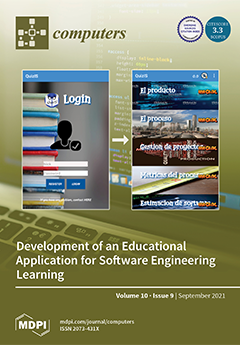In the age of digital information, where the internet and social networks, as well as personalised systems, have become an integral part of everyone’s life, it is often challenging to be aware of the amount of data produced daily and, unfortunately, of the
[...] Read more.
In the age of digital information, where the internet and social networks, as well as personalised systems, have become an integral part of everyone’s life, it is often challenging to be aware of the amount of data produced daily and, unfortunately, of the potential risks caused by the indiscriminate sharing of personal data. Recently, attention to privacy has grown thanks to the introduction of specific regulations such as the European GDPR. In some fields, including recommender systems, this has inevitably led to a decrease in the amount of usable data, and, occasionally, to significant degradation in performance mainly due to information no longer being attributable to specific individuals. In this article, we present a dynamic privacy-preserving approach for recommendations in an academic context. We aim to implement a personalised system capable of protecting personal data while at the same time allowing sensible and meaningful use of the available data. The proposed approach introduces several
pseudonymisation procedures based on the design goals described by the European Union Agency for Cybersecurity in their guidelines, in order to dynamically transform entities (e.g., persons) and attributes (e.g., authored papers and research interests) in such a way that any user processing the data are not able to identify individuals. We present a case study using data from researchers of the Georg Eckert Institute for International Textbook Research (Brunswick, Germany). Building a knowledge graph and exploiting a Neo4j database for data management, we first generate several
pseudoN-graphs, being graphs with different rates of pseudonymised persons. Then, we evaluate our approach by leveraging the graph embedding algorithm
node2vec to produce recommendations through node relatedness. The recommendations provided by the graphs in different privacy-preserving scenarios are compared with those provided by the fully non-pseudonymised graph, considered as the
baseline of our evaluation. The experimental results show that, despite the structural modifications to the knowledge graph structure due to the de-identification processes, applying the approach proposed in this article allows for preserving significant performance values in terms of precision.
Full article





